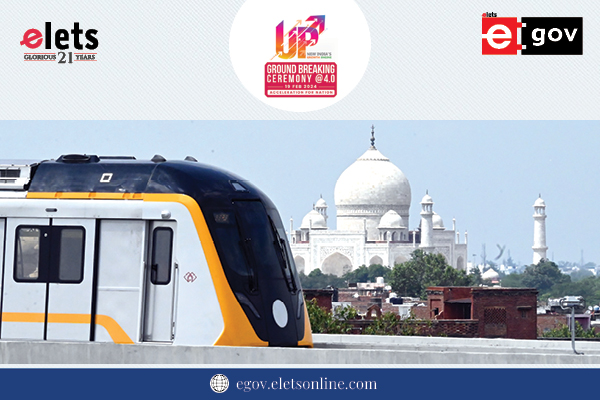

National Informatics Centre (Retired)
The Information & Communication Technology (ICT) has been used in India for the last couple of decades for development as well as for reaching out to the remote areas. In the early nineties, ICT was used mainly for computerising the back end activities of the government, i.e. for Government to Government (G2G) services. This comprised mainly digitisation of data and development of Management Information Systems (MIS) and Decision Support Systems (DSS).
Based on the recommendations of the National Task Force on Information Technology and Software Development in May 1998, the focus of governance shifted from the government to the citizens and many experiments were conducted to deliver government services at the doorstep of the common man. Some of the noteworthy projects of this period are GyanDoot (MP), LokVani (UP), Mitra (Rajasthan), eSeva (AP), Community Information Centres [CICs (N-E states and J&K], GRAMSAT (Odisha) and Friends (Kerala). With the enactment of Information Technology Act in 2000, electronic records and digital signatures got legal recognition, thereby paving the way for e-commerce. During this period, web technologies matured and telecom infrastructure in the country improved.
Encouraged by these developments and armed with learning from past projects, the Government of India formulated the National e-governance Plan (NeGP) in 2006 with an aim to make all government services accessible to the common man through common service delivery outlets at affordable costs ensuring efficiency, transparency and reliability of such services.
A few important projects were identified to be executed in the mission mode, like the establishment of core infrastructure, formulation of e-governance standards, setting up of Service Delivery Gateways, etc.
It also identified some of the central and state-level mission mode projects to support the vision of citizen-centric governance. As more and more government officers became tech savvy and realised the efficiency and speed in delivering good governance using ICT tools, many new e-governance projects were conceptualised and implemented within the central ministry and state departments across the country under NeGP as well as with their own funding.
There have been many success stories for reaching the unapproachable, bridging the digital divide and bringing good governance to the common man during the last two decades.
Passenger Reservation System, implemented by the Railways way back in the 1990s, heralded the use of IT in delivering Government to Citizen (G2C) services on a large scale. Subsequently, a number of pilot projects were initiated for government service delivery to the common man and many of them matured into full-scale roll outs. Land records computerisation, piloted in 20 districts in the early 90s in an attempt to modernise the system and digitise land records, has now been implemented across the country.
In many states, the Record of Rights (RoR) are linked with property registration so that any sale of a land parcel automatically gets reflected in the RoR bringing transparency to the system. VAHAN and SARATHI are two examples of providing single window citizen services to reduce customer waiting time, better monitoring of government revenue and transparency in the working of Transport Departments of the states. Passport Seva has evolved over the years to deliver passport services to the citizens in a timely, transparent and reliable manner through streamlined processes.
MCA 21, an IT-driven mission mode project of the Ministry of Company Affairs provides anytime, anywhere services to businesses and establishes a healthy business ecosystem to make the country globally competitive. The e-Filing system for income tax is another example where process re-engineering has made the entire process of paying tax, filing returns and getting refunds fast and easy for the common man.
At the same time, the IT-enabled system detects frauds and identifies defaulters, thereby, saving overhead expenditure and increasing revenue for the government.
Future Scenario
The last few years have seen a major shift in the perception of a common man due to the large penetration of mobile phones in the rural areas. Internet connectivity through broadband/ data packs has enabled the mobile phone users to access many online services without a computer.
Mobile payment gateways allow the users to conduct money transactions using their mobile phones. This necessitates the government to integrate their service delivery platforms with mobile payment gateways so that more and more citizens can avail the services.
Digital Signature Certificate (DSC) plays a major role for authentication, non-repudiation and integrity while delivering certain government services dealing with money, benefits or privacy of citizens. The traditional DSC framework is not scalable to a billion people.
eSign, an alternative solution, is already operational in some applications for offering fully paperless citizen services, allowing the user to digitally sign electronic documents. eSign provides biometric or OTP based authentication in line with e-KYC service.
Since biometric authentication is much more secure than OTP, Unique Identification Authority of India (UIDAI) infrastructure can be used for this purpose. With more and more government services being linked to Aadhaar, utilising this platform for authentication of beneficiaries will be reliable and cost effective.
It is a challenge in the current scenario as capturing the biometrics of the user and authenticating with UIDAI is possible only by a few biometric devices. Since fingerprint and iris scanning facilities are available with quite a few smart phone devices, handshaking their outputs with UIDAI infrastructure will greatly help in authenticating the beneficiaries while delivering subsidies and other government benefits.
Geographic Information System (GIS) is another technological tool, which can greatly improve the government service delivery, but unfortunately, has not been tapped to its fullest capability. GIS tools can also be used for planning and monitoring of various government programmes.
GIS tools, coupled with satellite imagery and non-spatial data can be developed for an optimum targeted service delivery. The spatial data infrastructure (SDI), set up by the government as a collaborative platform for data sharing, needs to be augmented and awareness to be created among the stakeholders to be more participative.
This needs to be a federated GIS, which is a balance between centralised and distributed GIS by ensuring standards and procedures to be shared across all stakeholders. Since the effort and cost involved in creating spatial databases covering the entire country are humongous, it is advisable to develop a Public Private Partnership (PPP) model and evolve e-commerce activities around it. More and more location based services could be developed for bringing the government to the doorstep of the common man.
Presently most of the government departments are operating in silos, making their services delivered independently of one another. This leads to a lot of duplication of efforts and the high cost of infrastructure which could be easily avoided if common data repositories are created by the stakeholders through collaborative measures.
Further, process reengineering could be carried out to simplify procedures. Some developments have already been initiated, for example, Open Government Data (OGD) platform, which is a repository of datasets from 105 (81 Central and 24 State) departments. However, much more needs to be done for creating data sets and establishing linkages between them.
With the increasing demand from the citizens to get better and faster service from the government in a transparent manner without the need to physically visit the office in most cases, a robust digital infrastructure needs to be in place.
This could be achieved by augmenting the existing data centres, adding new ones and interconnecting them in such a way that if one fails, operations could be shifted to another one without disruption of services.
Cloud computing could be a solution to this requirement. In order to utilise and harness the benefits of Cloud Computing, Government of India has set up ‘MeghRaj’ which encompasses a set of discrete cloud computing environments spread across multiple locations, built on existing or new (augmented) infrastructure, following a set of common protocols, guidelines and standards.
The objective is to accelerate delivery of e-services in the country while optimising ICT spending of the government by ensuring optimum utilisation of the infrastructure and speed up the development and deployment of eGov applications.
Since most of the e-governance service delivery happens over the network, telecommunication infrastructure plays a major role. Not only penetration into the rural areas has to be high, reliability and stability of such connectivity also need to be ensured.
Cyber security poses a major threat in the current scenario where more and more government services are delivered through online portals. Therefore, one of the major challenges lies in securing the entire infrastructure (where data are stored), networks (through which transactions are carried out) and last, but not the least, the end user access points (eg., computers, hand held devices, mobile phones, etc.).
It is worth noting that, not only preventive and protective tools need to be deployed, but also, a number of cyber security cells equipped with trained and capable manpower have to be set up to detect, prevent and mitigate any violations in a quick and efficient manner.
It is anticipated that by 2025, the growth of internet will be widespread with radical effects. With more and more Internet of Things (IoT), it is expected to offer advanced connectivity of systems, devices and services with automation of just about everything ranging from personal health monitors to biochips for animals and human beings. At the household level, people will start using more and more remotely controlled applications with phones to operate electrical equipment such as refrigerators, cooking ranges, heating and cooling systems, etc.
At a large scale, in smart cities cameras and sensors will be increasingly used enabling better law and order as well as improved traffic management.
A whole plethora of such possibilities shall open up in the future. With the high-level interconnectivity required for implementing the above facilities, we need to be prepared technologically to address the associated security and privacy concerns, especially while delivering government services to the citizens.
Be a part of Elets Collaborative Initiatives. Join Us for Upcoming Events and explore business opportunities. Like us on Facebook , connect with us on LinkedIn and follow us on Twitter, Instagram.











